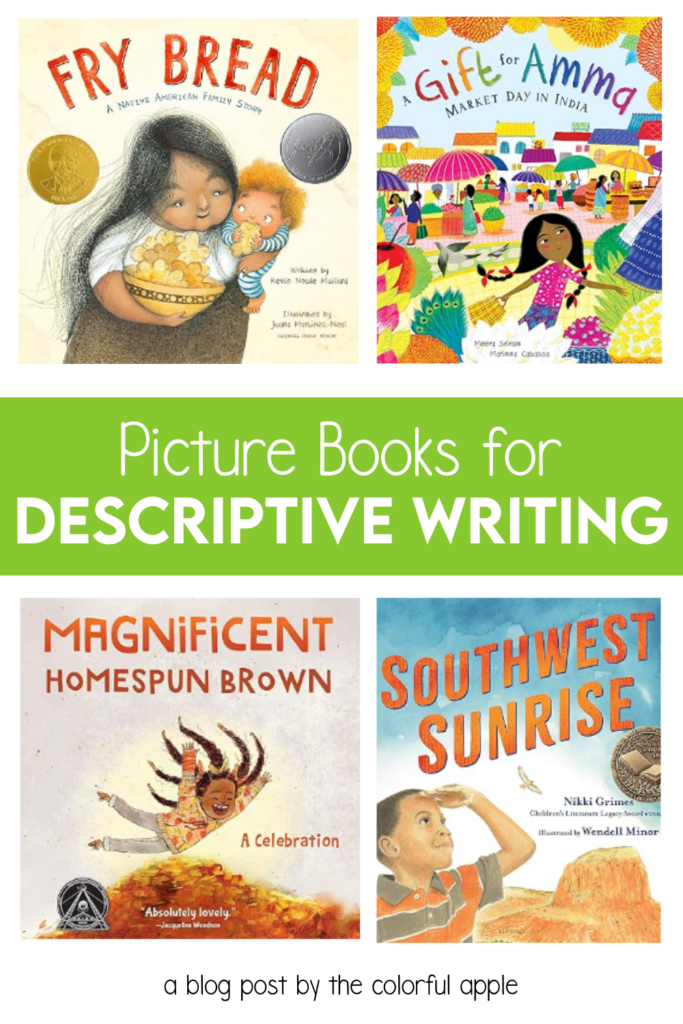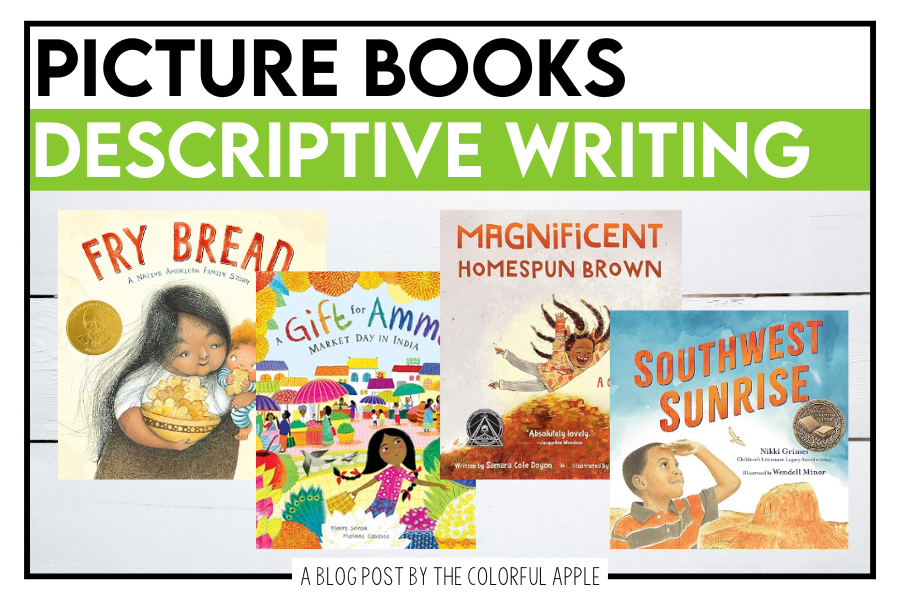
Picture books are a treasure trove of inspiration for teaching young students the art of descriptive writing. These delightful stories not only captivate young minds but also provide valuable opportunities to explore vivid language and imagery. As an experienced elementary school teacher, I’ve found that using interactive read-aloud lessons with picture books can be a powerful tool for enhancing students’ descriptive writing skills. In this blog post, I’ll share some strategies on how to use picture books to teach descriptive writing effectively.
I’m sharing all of these books on video as well! Check out the Picture Books to Teach Descriptive Writing video on my Youtube channel:
This post contains affiliate links. Read my full disclosure here.
How to Use Picture Books to Teach Descriptive Writing
Step 1: Choose the Right Picture Book
The foundation of any successful interactive read-aloud lesson is selecting an engaging and descriptive picture book. Look for books with rich language, vivid illustrations, and a story that resonates with your students. A great choice often includes a story that evokes strong emotions, places, or characters that students can easily visualize.
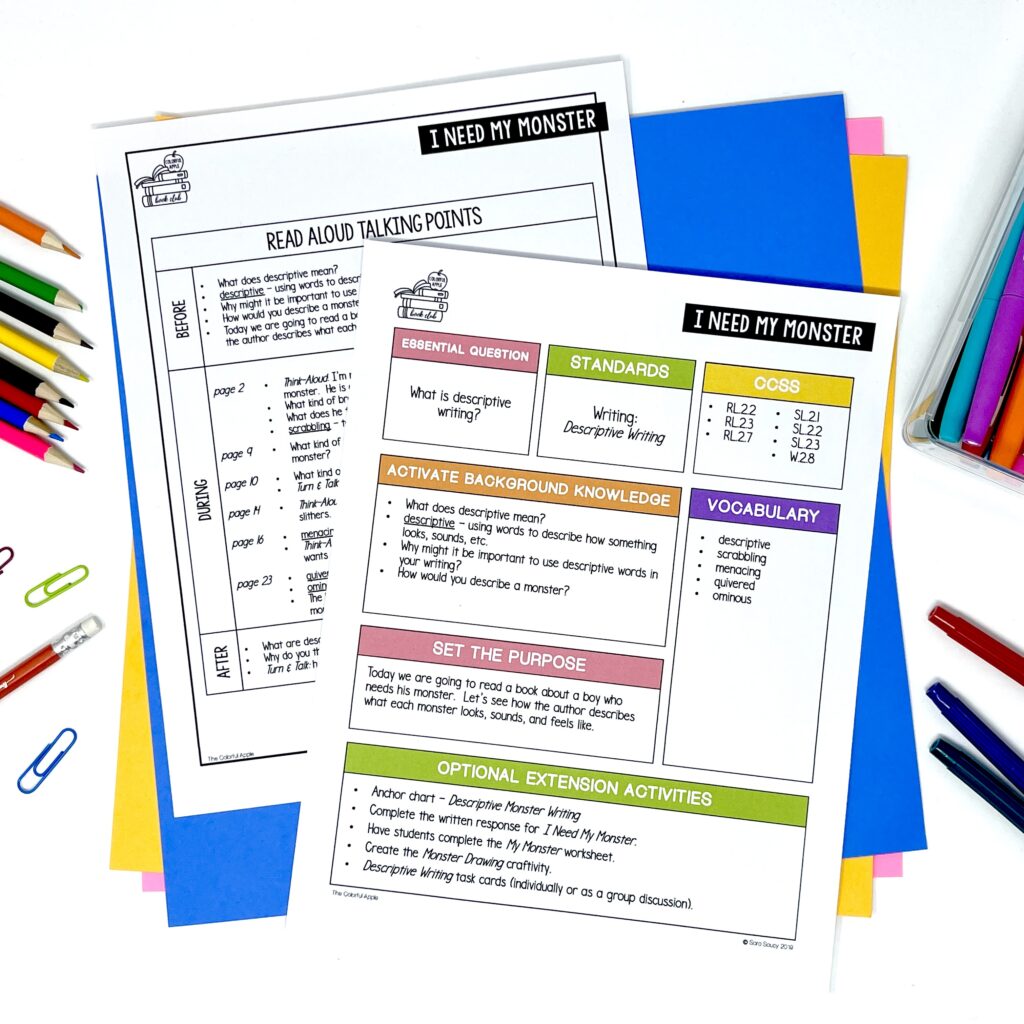
Step 2: Pre-Reading Discussion
Before diving into the story, engage your students in a pre-reading discussion. Ask open-ended questions that encourage them to share their thoughts and feelings about the book’s cover, title, or any prior knowledge they might have related to the story’s theme. This discussion helps students activate their prior knowledge and prepares them for a more immersive reading experience.
Step 3: Interactive Read-Aloud
During the read-aloud, use interactive techniques to involve your students actively. Pause at key moments to ask questions about the story, the characters, or the setting. Encourage students to make predictions, share their reactions, or discuss any unfamiliar words or phrases. This engagement keeps students connected to the text and encourages them to think critically about the descriptive elements.
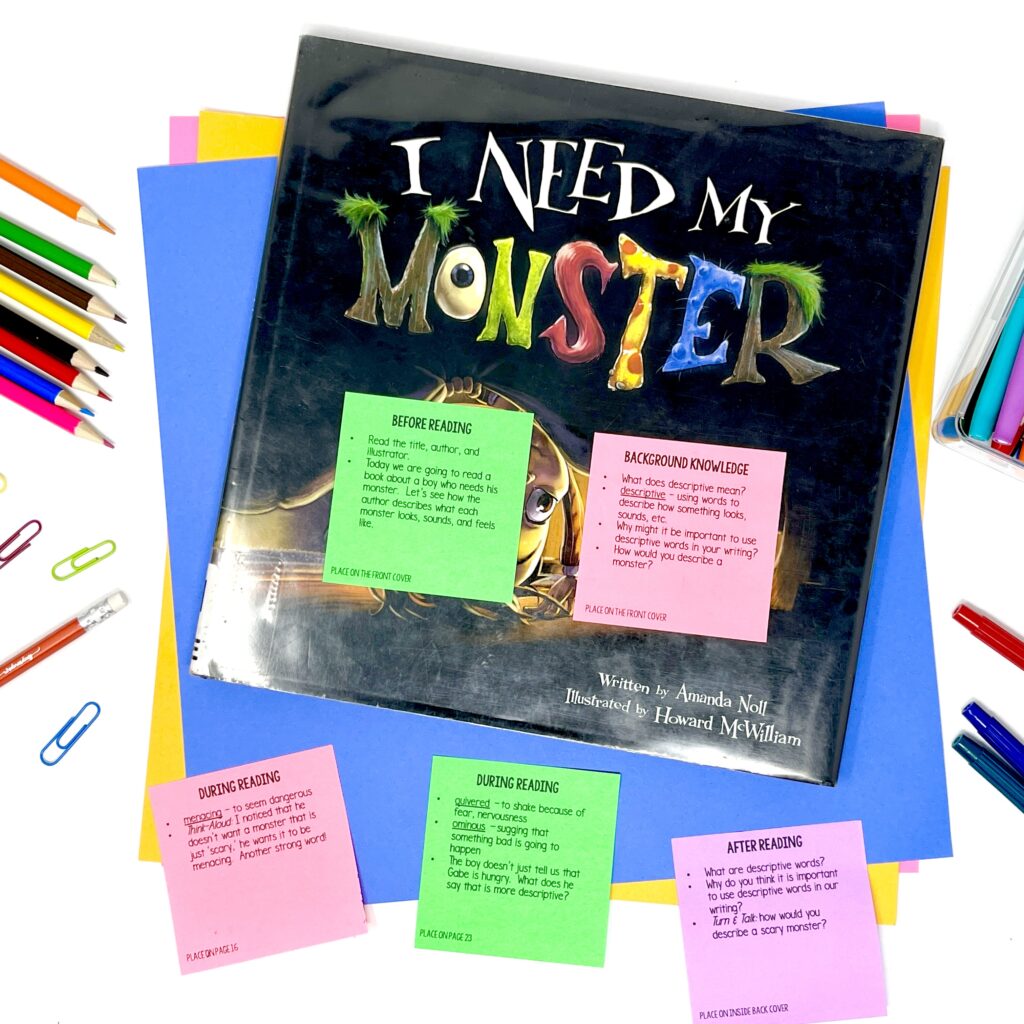
Step 4: Visualizing and Describing
After completing the read-aloud, it’s time to dive into the heart of descriptive writing. Ask students to close their eyes and visualize the story in their minds. What do they see, hear, smell, taste, and feel? Encourage them to use their senses to create mental images of the story’s elements. Then, have them share their descriptions with the class. This activity helps them practice using descriptive language.
Step 5: Identifying Descriptive Language
Now, revisit the text together and identify descriptive language used by the author. Highlight vivid adjectives, colorful metaphors, and any other literary devices that contribute to the story’s imagery. Discuss how these choices by the author make the story come alive and create a clear picture in the reader’s mind.

Step 6: Guided Writing Exercise
After analyzing the author’s descriptive writing, it’s time for students to practice on their own. Provide them with a prompt related to the story, such as describing a character or setting in detail. Encourage students to use the descriptive language they’ve identified in the book and their own imaginative skills to craft vivid paragraphs.
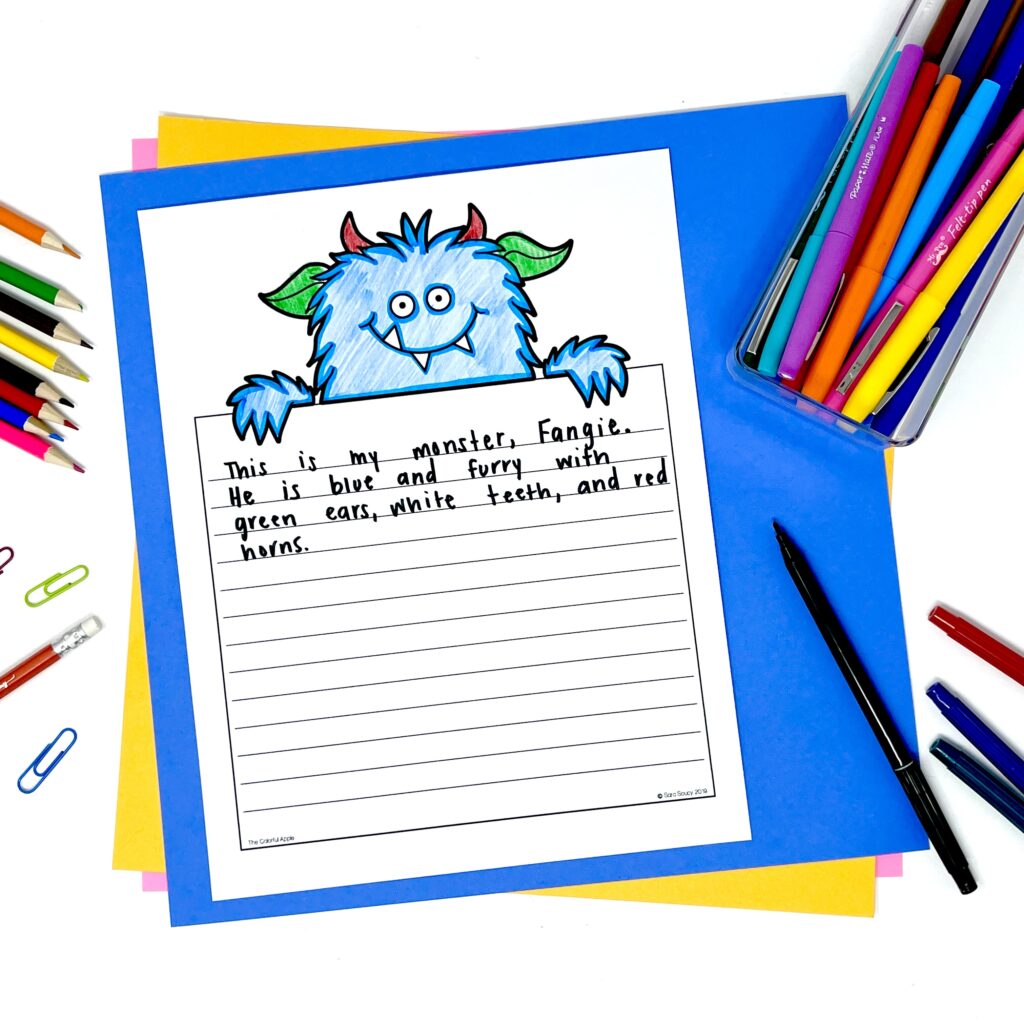
Teaching descriptive writing through interactive read-aloud lessons with picture books is a creative and effective approach to engage young students in the world of language and imagery. By carefully selecting books, facilitating meaningful discussions, and guiding students in visualizing and describing, we empower them to become skilled writers who can bring their stories and ideas to life with descriptive language.
This method not only fosters a love for reading but also equips students with essential writing skills that will serve them well throughout their academic journey and beyond. So, go ahead and embark on this literary adventure with your students, and watch their writing flourish with newfound descriptive power!
Picture Books to Teach Descriptive Writing
- I Need My Monster by Amanda Noll
- Southwest Sunrise by Nikki Grimes
- Magnificent Homespun Brown by Samara Cole Doyon
- A Gift for Amma by Meera Sriram
- Saturdays & Teacakes by Lester Laminack
- Fry Bread by Kevin Noble Maillard
Listen on the Podcast
Interactive Read Alouds Done for You
If you’re ready to add more read alouds into your day, I have the solution for you! The Colorful Apple Book Club brings read aloud lessons and activities such as vocabulary, crafts, writing response and discussion prompts, right to you!
No more wondering if the book you found will work for the reading strategy you wanted. No more flipping through pages of countless books to make sure it’s on your students’ listening level. I’ve done all the work for you! Just hit print and you’ll be totally set for your read aloud lessons.
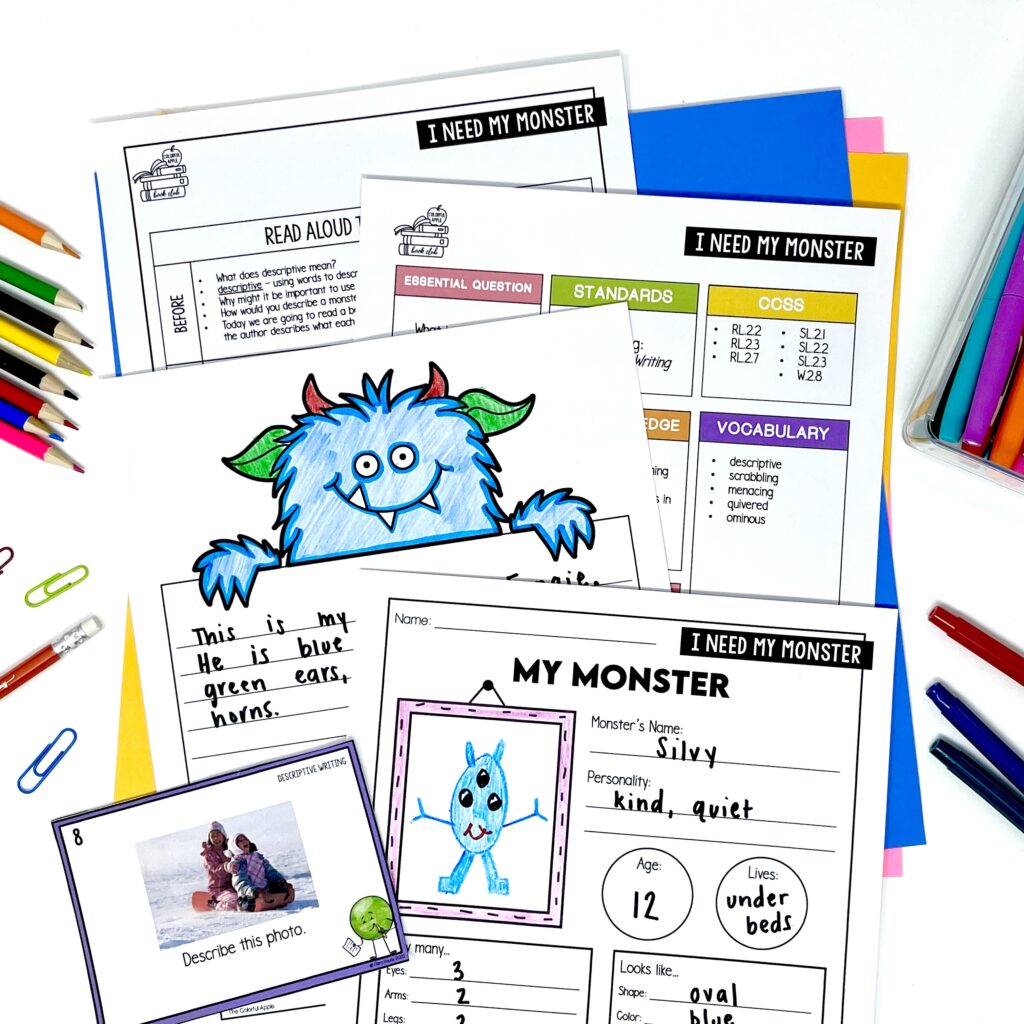
Each month with your membership, you’ll get 5 read aloud lessons and activities to support your students.
Each lesson includes:
- a teacher guide to help you prep the lesson
- an anchor chart that connects to the book and the lesson
- discussion questions that you can print right on sticky notes!
- vocabulary words to help students understand the story
- written response
- activity sheet to practice the skill of the lesson
- craftivity or game that reinforces the skill
- task cards to guide discussion
Ready to learn more about the Colorful Apple Book Club or sign up? Click HERE! I’d love to walk you through everything you’ll get! I can’t wait to save you time and get these effective lessons in your hands.

